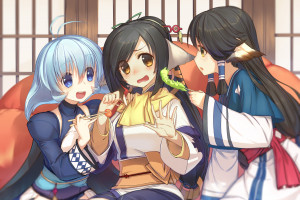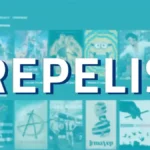Doujinshi, a unique subculture within the vast landscape of Japanese manga and anime, has gained international recognition over the past few decades. “Doujin” (同人) refers to a group of people with shared interests, and “shi” (誌) means magazine or publication, thus “doujinshi” (同人誌) translates to “self-published works.” These works can range from manga and novels to video games and music, produced by amateurs and professionals alike. Doujinshi allows creators to express themselves freely, often exploring themes and ideas that mainstream media might avoid. This article delves into the multifaceted world of doujinshi, with a particular focus on Doujindesu, a popular platform in the doujinshi community.
What is Doujinshi?
Historical Background
The roots of doujinshi can be traced back to the early 20th century with the emergence of self-published literary magazines. However, it wasn’t until the 1970s, with the rise of manga and anime, that doujinshi started to gain significant popularity. This period saw the formation of various fan clubs dedicated to specific manga series, where fans would create and share their own stories based on their favorite characters.
Types of Doujinshi
Doujinsh’i can be broadly categorized into two types: derivative works and original works. Derivative works are based on existing characters and settings from popular manga, anime, or video games. These often explore alternate storylines, romantic pairings, or parodic scenarios. Original works, on the other hand, feature entirely new characters and plots, showcasing the creator’s own ideas and storytelling abilities.
The Doujinshi Community
Creators and Fans
The doujinshi community is a vibrant and dynamic ecosystem consisting of creators, known as “doujinshi artists” or “doujinshi circles,” and fans who avidly consume and support these works. While some doujinshi artists are amateurs pursuing their passion, many are professionals who use doujinshi as a creative outlet outside of their mainstream projects. The community is known for its inclusivity and diversity, welcoming creators of all backgrounds and skill levels.
Doujinshi Events
Doujinshi culture is celebrated through various events, the most notable being Comiket (Comic Market) in Tokyo, the largest doujinshi convention in the world. Held twice a year, Comiket attracts hundreds of thousands of attendees who gather to buy, sell, and trade doujinshi. Other significant events include Comic City, COMIC1, and various smaller regional conventions. These events provide a platform for creators to showcase their work, connect with fans, and network with other artists.
The Role of Doujindesu
Introduction to Doujindesu
Doujindesu is a popular online platform dedicated to doujinshi. It serves as a comprehensive database and marketplace where users can browse, purchase, and download doujinshi. The platform offers a vast collection of works spanning various genres, including romance, fantasy, science fiction, and more. Doujindesu has become a central hub for doujinshi enthusiasts worldwide, offering easy access to both popular and obscure titles.
Features of Doujindesu
Doujindesu is designed to cater to the needs of both creators and consumers. Key features include:
- Extensive Catalog: Doujindesu boasts an extensive catalog of doujinshi, ranging from classic titles to the latest releases. Users can search for works by title, author, genre, or tag, making it easy to find specific doujinshi.
- User-Friendly Interface: The platform features a user-friendly interface that allows for seamless navigation and browsing. Users can create accounts to manage their purchases, wishlist, and download history.
- Community Interaction: Doujindesu fosters a sense of community by allowing users to rate and review doujinshi, participate in forums, and follow their favorite creators. This interactive element enhances the overall user experience and helps build a vibrant online community.
- Support for Creators: Doujindesu provides various tools and resources to support doujinshi artists. Creators can set up profiles, upload their works, and manage sales. The platform also offers promotional opportunities, helping artists reach a wider audience.
- Digital and Physical Sales: While digital downloads are the primary mode of distribution, Doujindesu also supports the sale of physical copies. This is particularly important for collectors who prefer owning tangible versions of their favorite doujinshi.
Impact of Doujindesu on the Doujinshi Community
Doujindesu has had a profound impact on the doujinshi community by making these works more accessible to a global audience. Prior to the advent of online platforms like Doujindesu, acquiring doujinshi often required attending conventions in Japan or relying on niche import services. Doujindesu has democratized access to doujinshi, allowing fans from around the world to enjoy these works from the comfort of their homes.
The Creative Process Behind Doujinshi
Inspiration and Conceptualization
The creation of a doujinshi begins with inspiration. Many doujinshi artists draw inspiration from their favorite manga, anime, or video games, imagining new scenarios or exploring untold stories. For original works, inspiration can come from various sources, including personal experiences, mythology, literature, and current events.
Writing and Storyboarding
Once an idea is conceptualized, the next step is writing the script and storyboarding. This phase involves outlining the plot, developing characters, and planning the layout of each page. Storyboarding is a crucial step in visual storytelling, as it allows the artist to plan the flow of the narrative and the placement of dialogue and action.
Drawing and Inking
With the storyboard as a guide, the artist begins the process of drawing and inking. This involves creating detailed pencil sketches, followed by inking to define the final lines. Digital tools and software have become increasingly popular for this stage, offering artists greater flexibility and precision.
Adding Text and Effects
After the artwork is complete, text and effects are added. This includes dialogue, narration, sound effects, and other visual elements that enhance the storytelling. The placement and style of text are carefully considered to ensure readability and complement the artwork.
Publishing and Distribution
The final step is publishing and distribution. For physical copies, this involves printing and binding the doujinshi. Digital versions are prepared for upload to platforms like Doujindesu. Effective marketing and promotion are essential to reach potential readers and generate interest in the work.
Legal and Ethical Considerations
Copyright Issues
One of the most significant legal considerations in the doujinsh’i community is copyright. Many doujinshi are derivative works based on existing intellectual properties, raising potential copyright issues. In Japan, doujinsh’i operates in a legal gray area, with publishers often turning a blind eye due to the promotional benefits doujinsh’i can provide. However, creators must be cautious and respectful of the original works they draw from.
Ethical Practices
Ethical practices in the doujinshi community include giving proper credit to original creators, avoiding plagiarism, and respecting the wishes of rights holders. Additionally, creators should be mindful of the content they produce, particularly regarding sensitive topics, to avoid causing harm or offense.
The Future of Doujinshi and Doujindesu
Technological Advancements
Advancements in technology continue to shape the future of doujinsh’i. Digital tools and platforms like Doujindesu have revolutionized the way doujinsh’i are created, distributed, and consumed. Emerging technologies such as virtual reality (VR) and augmented reality (AR) may further enhance the doujinshi experience, offering new ways to engage with these works.
Globalization of Doujinshi
The globalization of doujinsh’i is another significant trend. As platforms like Doujindesu make doujinsh’i more accessible to international audiences, the community continues to grow and diversify. This globalization fosters cross-cultural exchange and collaboration, enriching the doujinsh’i landscape with new perspectives and ideas.
Challenges and Opportunities
Despite its many strengths, the doujinsh’i community faces challenges, including copyright issues, market saturation, and the need for sustainable business models. However, these challenges also present opportunities for innovation and growth. By embracing new technologies, fostering a supportive community, and advocating for fair legal practices, the doujinsh’i community can continue to thrive.
Conclusion
Doujinsh’i represents a unique and vibrant aspect of Japanese pop culture, characterized by creativity, passion, and community. Platforms like Doujindesu play a crucial role in supporting and promoting this art form, making it accessible to fans worldwide. As the doujinsh’i community continues to evolve, it remains a testament to the enduring power of fan creativity and the limitless possibilities of self-expression.
Through the exploration of Doujindesu and the broader doujinsh’i culture, we gain insight into a world where imagination knows no bounds, and where fans become creators, contributing to an ever-growing tapestry of stories and art. Whether you’re a long-time fan or a newcomer, the world of doujinsh’i offers something for everyone, inviting you to discover, create, and share in the magic of self-published works.







